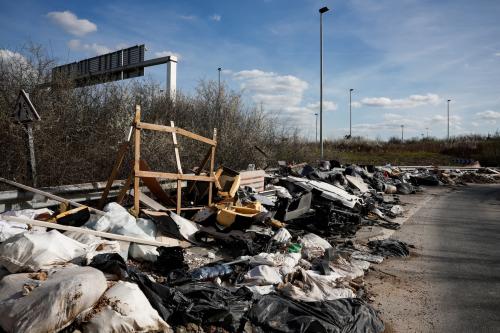In the past decade, the population of Washington, D.C., has grown at a rate almost twice as fast as the growth in housing. Jenny Schuetz, a fellow in the Metropolitan Policy Program, has been monitoring the changes in housing and housing policy; see some charts from her research below.
RESTRICTIVE ZONING IMPEDES HOUSING GROWTH
Restrictive zoning refers to areas in which housing is restricted to single-family homes, row houses, or small apartments instead of high-density housing. While the notion of supply and demand suggests that more housing should be built in areas where home values are appreciating, research shows that housing has only increased dramatically in areas with more permissive zoning. However, Schuetz writes, “District neighborhoods that saw higher growth in housing values did see more new housing construction—but only where restrictive zoning didn’t impede growth.”

AFFLUENT AREAS FOCUSED ON HOUSING ADDITIONS INSTEAD OF NEW CONSTRUCTION
While permits for construction in wealthy areas have increased in DC, almost no new housing is being built in these areas, instead focusing on additions to existing homes. When housing space in wealthy areas does not increase with demand for high-end homes, this demand then spills into middle income areas. This increases gentrification and, Schuetz says, the city’s “zoning and politics insulate the city’s wealthy areas from change, while lower-income families struggle to afford ever-increasing rents.”

AFFORDABILITY VARIES ACROSS THE NATION
Despite the focus on places like the District with housing shortages, Schuetz observes, “housing affordability and related measures of stress can exist in markets where housing values are moderate by national standards and plenty of houses sit empty.” Across the country, low-income households are more burdened by housing costs, likely have longer commutes, and live in older homes.




Commentary
Charts of the Week: Housing in Washington, DC and beyond
October 25, 2019